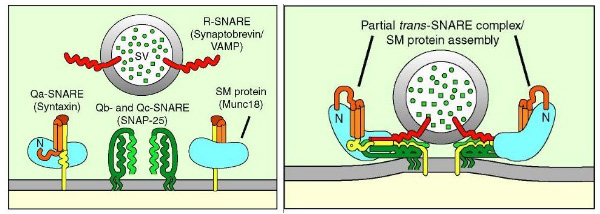Answer: The tetrapartite synapse is the concept that 4 cellular units contribute to synaptic signaling: the presynaptic neuron, postsynaptic neuron, glia, and the extracellular matrix.
http://fantasticpixcool.com
The traditional conception of neurotransmission included only two cellular components. The presynaptic neuron releases neurotransmitter compounds into the synaptic space, a physical separation between neurons. These neurotransmitters can then diffuse around randomly until they bump into and interact with a transmembrane protein expressed on the surface of a nearby neuron, the postsynaptic neuron.
This concept was expanded upon by the introduction of the “tripartite synapse.” it was found that glia interact closely with the synapse - astrocytes in the CNS and Schwann cells in the periphery at the neuromuscular junction. Of particular interest, astrocytes are known to be electroactive. Additionally, astrocytes can release and take up neurotransmitters like glutamate.
The tetrapartite synapse adds a fourth component to the equation. The term was first coined by Dityatev and Rusakov in 2011, and also incorporates the extracellular matrix as important for transmission (Molecular signals of plasticity at the tetrapartite synapse). The ECM surrounds the entire space without any cells, where it helps to keep the cells in place and structurally sound.
The extracellular matrix can also be found at the synapse where it serves more than a structural function. According to Peter Kalivas and his research team, the ECM is needed for plasticity. Matrix metalloproteinases are enzymes which modify the ECM, allowing it to store information related to neuronal and glial activity. The ECM also directly modulates ion channels at the synapse.
The extracellular matrix is particularly relevant during development. One of the main questions that has not yet been fully understood is how neural processes find the correct targets. This is referred to as axonal guidance. A few pieces are known, however. First of all, it is known that there are receptors called cell adhesion molecules (CAMs) on the extending neural processes that directly interact with other CAMs that are expressed on the structural proteins in the extracellular matrix. When these CAMs dimerize with each other, the CAM on the extending cell sends a biochemical signal intracellularly which encourages the cell to continue growing in that direction. These cells extend thin processes searching for other cell adhesion molecules to interact with. When it forms a synapse with the correct target, the extracellular matrix remains near the synaptic site, and will continue to play a role in neurotransmission after the synapse has been solidified.



